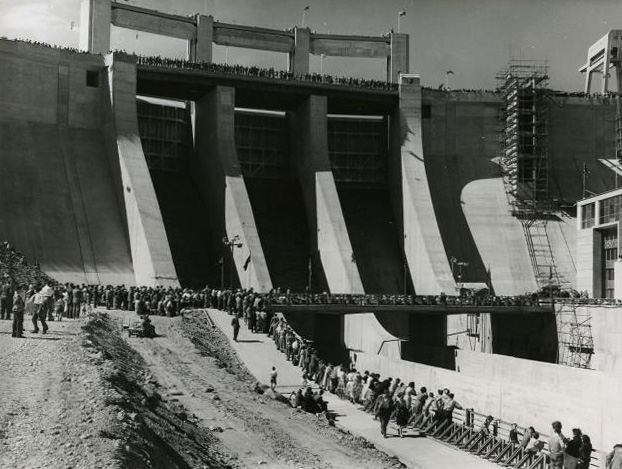Hydroelectric Power in New Zealand
Hydroelectric power is a very important part of New Zealand’s electrical grid. Depending on rainfall, hydro generation typically accounts for between 55% and 65% of New Zealand’s power generation. During periods of high rainfall this percentage can climb to more than 70%.

The first hydro schemes in New Zealand were built by mining operators at the height of the gold rush. It all began in the hills of Otago with the Bullendale gold mine that, in 1886, developed a small hydro plant to power their gold stamping equipment. By 1888 the mining town of Reefton in the South Island West Coast was the first town in the Southern Hemisphere to receive a municipal electricity supply thanks to the Reefton Power Station.
In 1896, the New Zealand Government became involved in the hydroelectricity industry by legislating that all new hydro schemes needed government approval. The first scheme built by the Government was a 100kW generator at Okere Falls near Rotorua in May 1901. The Government involved itself in increasingly large and sophisticated projects such as the Waipori scheme in 1903 and Coleridge Power Station which supplied Christchurch with 4.5MW from 1914.
In the following decades more and more stations were built from the Waikato to Wanganui to Waitaki to Waikaremoana. Due to the growth of supply and demand for electricity high voltage transmission grids were planned for the North and South Islands to carry power from isolated hydroelectric stations to the growing population centers.
After the World War II the demand for electricity grew rapidly. In the 1940s and 1950s several large schemes were built including Roxburgh, Tekapo A, and a cascade of stations on the Waikato. The commission of the HVDC link between the North and South Islands saw the beginning of the national transmission grid. This opened up further development of the South Island hydro resources as power could now flow northwards to meet the insatiable demand of the North Island.
Benmore Station was completed in 1965 and soon a system of dams and stations were built at Lakes Pūkaki, Tekapo, and Manapōuri. This was followed in the North Island by the development of the Tongariro power scheme which linked several river systems together through a series of dams and canals from 1973 onwards.
But this large scale growth would not prove to be sustainable. Public resistance to large scale hydroelectric generation began in the 1960s with the rise of the environmental movement. The ‘Save Manapouri Campaign’ prevented the planned rise of Lake Manapouri and saw issues such as conservation, tourism and recreational activities managed alongside the hydro resource.
The development of the Clyde Dam through the 1980s marked the end of major hydro development in New Zealand. There was significant public outcry due to environmental and social impacts of the project which would see houses and orchards flooded. The Clyde Dam was further marred by major cost overruns due to poor site selection where a fault line was located under the dam after construction had begun. This resulted in a total redesign of the project and a 25% loss of generation capacity.
While resistance to further hydro development remains, there are several proposed schemes in development. These are mostly run-of-river generators which do not have the same environmental impact as the creation of a major storage lake.
